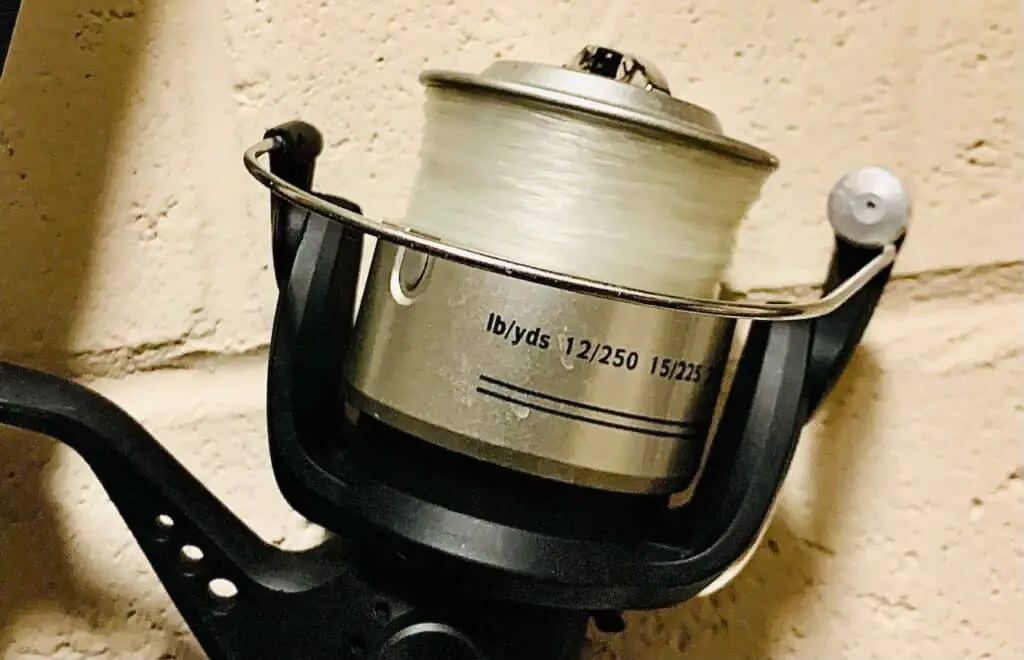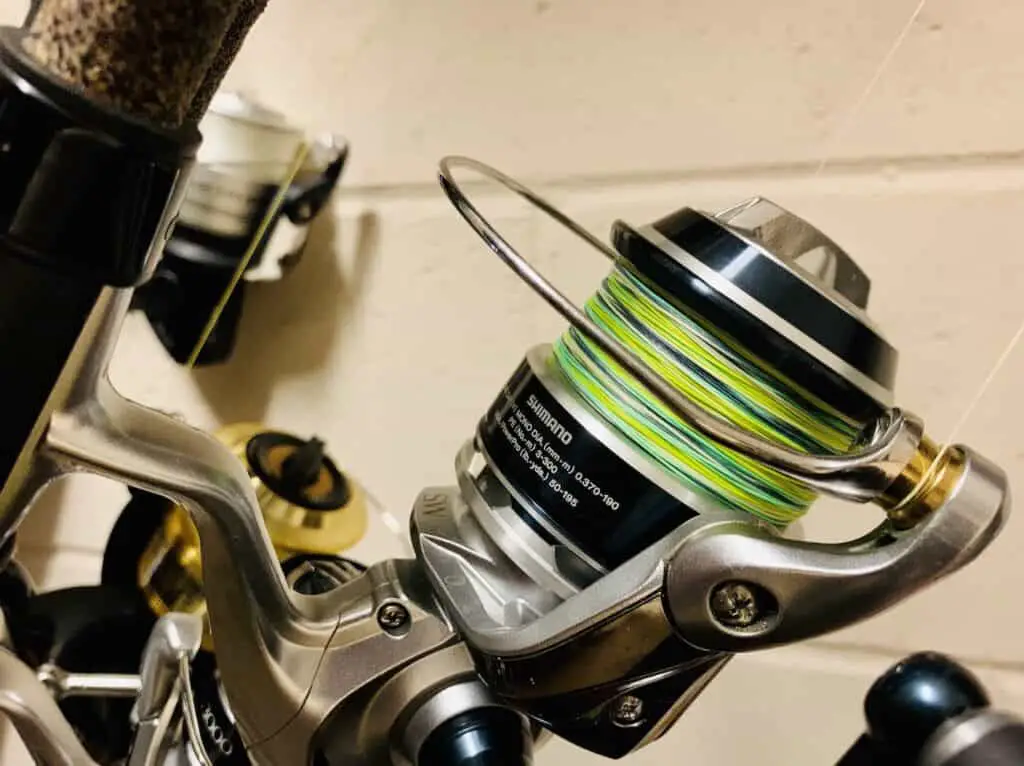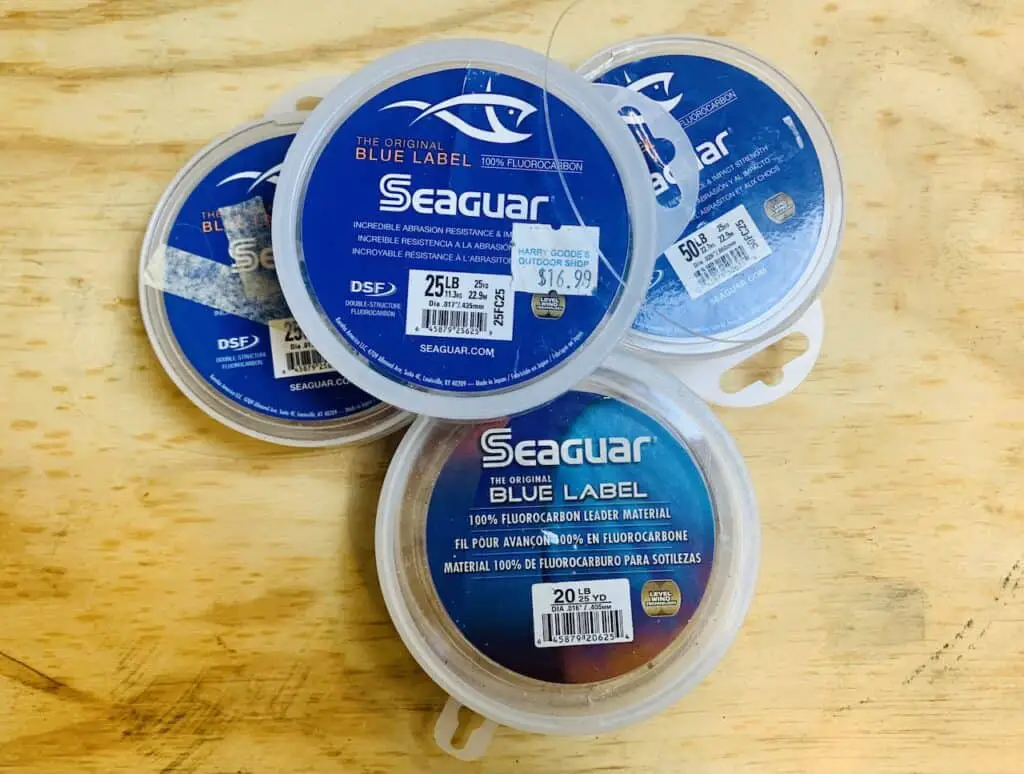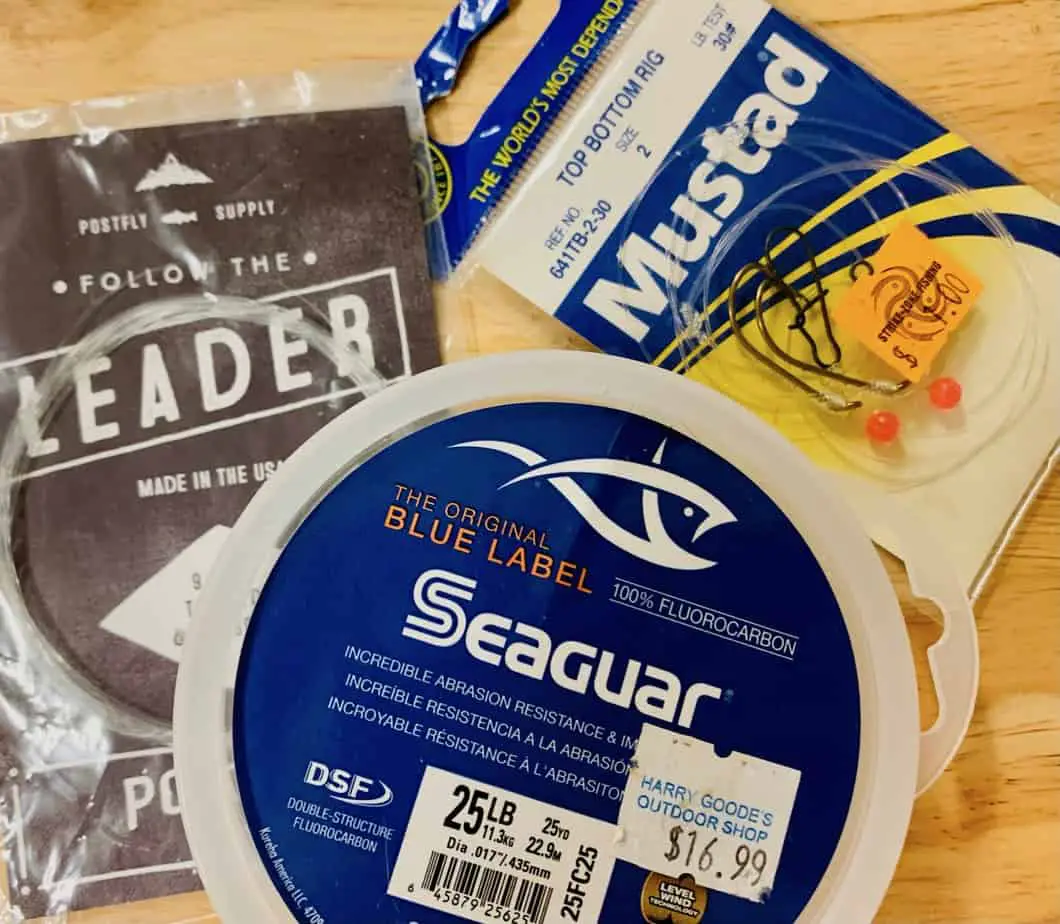One of the most common questions we hear is, “What type of fishing line should I use?” Here at Tight Lines and High Tides, we firmly believe that the best fishing line for you to use is one that suits the type of fishing you are doing, that you're comfortable using, and that you can afford.
In this guide you will find out about the three main types of fishing line—braid, mono, and fluoro—and we will cover the pros and cons of each, the best times to use them, and how to get started with fishing line without breaking the bank. We’ll cover when to use each type of line, including the best types of fishing line to use as a leader, main line, backing, and more.
Three Main Types of Fishing Line and Their Uses
When you hit the tackle shop, or are shopping online, you are going to find three main types of fishing line that are readily available and at various price points: monofilament, braid, and fluorocarbon.
Monofilament Fishing Line Features and Usage
Monofilament, or mono, is a single-strand fishing line known for its flexibility, abrasion resistance, and relatively low price point. These features make this line an accessible and easy-to-use choice for just about anyone looking to fish, whether from the shore, the dock, or out on the water. Mono comes in a variety of strengths and colors, giving you options for all different types of fishing applications.
Mono has line memory–although not as much as fluoro–so be ready to give it a good stretch before you get going, especially if it's been spooled up for a while. Mono tends to break down faster than other types of line under harsh UV rays and saltwater environments, so keep this in mind during general use and storage.
Pros:
- Suspends in water
- Highly stretchy
- Low visibility
- Easy to cast
- Knot strength
- Inexpensive
Cons:
- Needs to be replaced frequently
- Absorbs water, changing its behavior over time
- Retains memory
- Breaks down from UV exposure
Mono is commonly used as a main line, leader, and backing. You'd use mono as a backing on your reel when you're looking for a less expensive way of using braid for your main line. An entire reel of braid can get very expensive, so using mono as a backing and connecting it to braid with an uni-to-uni knot, and then finishing with fewer feet of braid is a great compromise for performance and cost. We actually mention this idea in out Getting Started with Surf Fishing for Under $250 article.

When mono is used as a leader, its usually when you're topwater fishing. Topwater lures are designed to float on top of the water, and mono is the line choice that also floats. If you were to use a topwater lure with a fluorocarbon leader, you would notice that the line and lure would be sinking, preventing you from using the lure as designed. To read more detail about this, read through the Topwater section of our article on Surf Fishing Lures.
Monofilament can also be a wise choice for for your main line when you're in need of abrasion resistance. This is usually when you're fishing around a jetty, or around mangroves, or lots of weeds in the water. Mono allows you to pull and manipulate the line to get it unstuck in these situations, without as much of a risk of your line breaking off in the water.
As far as the line strength to choose, we'd recommend a 15 pound test line for surf fishing and a lighter, 2-4 pound test for freshwater fishing. Our go-to is the KastKing World’s Premium Monofilament Fishing Line. If you'd like to learn more about monofilament, read through our Complete Guide to Monofilament Fishing Line.
Braid Fishing Line Features and Usage
Braid is a multi-line fishing line known for its high strength relative to its small diameter and can help you wrangle larger fish and fit more line on your reel. Like its name implies, braid fishing line is made up of multiple strands of line that are woven together.
Braid is a great main line, known for its durability, strength, and longevity, and is relative buoyancy because of the water repellent materials it is made from, like Dyneema or Spectra fibers. Braid is frequently used to catch large fish and fish in heavy cover.
Known to be long-lasting and durable, braid also tends to be more expensive than monofilament, making it a good choice for a main line paired with a mono or fluoro leader. Braid is tough to cut and can be harsh on fingers. Please wear a glove if you plan on touching braided line directly as line cuts can be quite painful and deep.
Pros:
- Long-lasting
- Great for knots
- High capacity
- Little to no shock absorption
- Great cast performance
Cons:
- Expensive
- Difficult to cut or break
- Low abrasion resistance
- More visible than other types of line
- Can be hard on your fingers

Berkley is one of our go-to brands for fishing line, and we love the Berkley X5 Braided Line in low visibility green.
What to deep dive on braided fishing line? Check out our guide to braid.
Fluorocarbon Fishing Line Features and Uses
Fluorocarbon, or fluoro, has been rising in popularity because it is a highly abrasion resistant line with a low refraction index, making it nearly transparent in the water and suitable as a mainline or a leader. This single-strand line tends to be more expensive than other options, but is quickly becoming a very popular choice among anglers. When used as a leader line, with any other type of main line, you realize the benefits of its transparency without breaking the bank.
When fluoro is used as a leader, it helps the bait presentation. Fluoro is less stretchy than monofilament, which gives fluoro the advantage over mono as a leader since the angler can feel the bite easier. Fluoro will also react to your twitches and jerks better than mono because of the difference in stretch. Fluoro sinks faster that monofilament, which means you're getting your twitchbaits to the right depth more quickly.
When fluoro is used as main line, the transparency and thin diameter make it almost completely invisible. It surpasses monofilament as a main line for this reason.

Pros:
- Nearly invisible in clear water
- Superior bait presentation
- Virtually no water absorption rate
- Tendency to sink
Cons:
- Expensive
- High memory
When you're ready to purchase some Fluorocarbon line, our recommendation is always Seaguar. We keep several different strengths in the tackle bag to be able to change up a rig on the beach. A great first fluoro would be 25 yards of the 25 lb test variety to be used as leader line when fishing from the beach.
To learn more about fluoro, head on over to everything you need to know about fluorocarbon fishing line.
Comparing Monofilament, Braid, and Fluorocarbon Fishing Line
The table below compares monofilament, braid, and fluoro carbon fishing line based on some of their key attributes like price, abrasion resistance, sink rate, and more. We also indicate which fishing lines perform best in saltwater and freshwater.
| Mono | Braid | Fluoro | |
| Price point | $ | $$ | $$$ |
| Abrasion resistance | Moderate | Low | High |
| Visibility | Low | High | Extremely Low |
| Line memory | Low | None | High |
| Stretch | High | Low | Moderate |
| Water absorption | High | Low | Low |
| Sink rate | Floats | Floats | Sinks |
| Main line, leader, or backing? | Main line Leader Backing | Main line | Main line Leader |
| UV Resistance | Low | High | High |
| Sensitivity | Moderate | High | High |
| Replacement | Frequent | Rare | Rare |
Pro-tip: Combine Different Types of Line for Performance
One of our favorite, most cost-effective ways to reap the benefits of all of these types of line is to combine them, leveraging each type of line for its best features in a single reel. Since mono is typically the cheapest, we use mono to fill a large surf fishing reel as a backing. Then, we attach braid using a uni-to-uni knot for cast performance and line capacity and top it off with a fluorocarbon leader using the FG knot to take advantage of the transparency and abrasion resistance of fluoro. If you’re just getting started, head over to our post about How To Get Started With Beach Fishing For $250 or Less.
Disposing of Fishing Line
No matter what type of fishing line you are using, here at Tight Lines and High Tides, we want to remind you to dispose of your fishing line properly. Carelessly discarded fishing line can cause damage to the local environment and endanger local wildlife who may ingest the line or even become tangled in the line and die.
Fishing line recycling tubes have become more common near popular fishing destinations, and you can always bring old fishing line into a local bait and tackle shop, where they will properly recycle the line for you.We think it's great that there are organizations like Pure Fishing America/Boat US who take recycled fishing line and turn it into things like tackle boxes and fish habitats.
Recycling your fishing line is a great way to give back to the fishing community and be an environmental steward! Learn more about proper fishing line maintenance and disposal.
The Bottom Line on Fishing Line
If you're like us you're surprised by how many options for fishing line are on the market today. Everywhere you look is a manufacturer claiming to have the best, the strongest, the most well-made fishing line you can find. By combining different types of line you can get the best of all worlds. Good luck with your next catch!
Tight Lines, Y'all
Recent Posts
Fat Cow Jig Strips: The Ultimate Bucktail Jig Upgrade for Surf Fishing
As discussed in my previous article, "Surf Fishing with Bucktail Jigs: Ultimate Guide for Beach Anglers," bucktail jigs are a staple in any surf angler's tackle box, offering a versatile way to catch...
In my previous article, "Surf Fishing with Bucktail Jigs: Ultimate Guide for Beach Anglers," I introduced you to the bucktail jig and discussed how versatile of a lure it is for catching a wide range...

